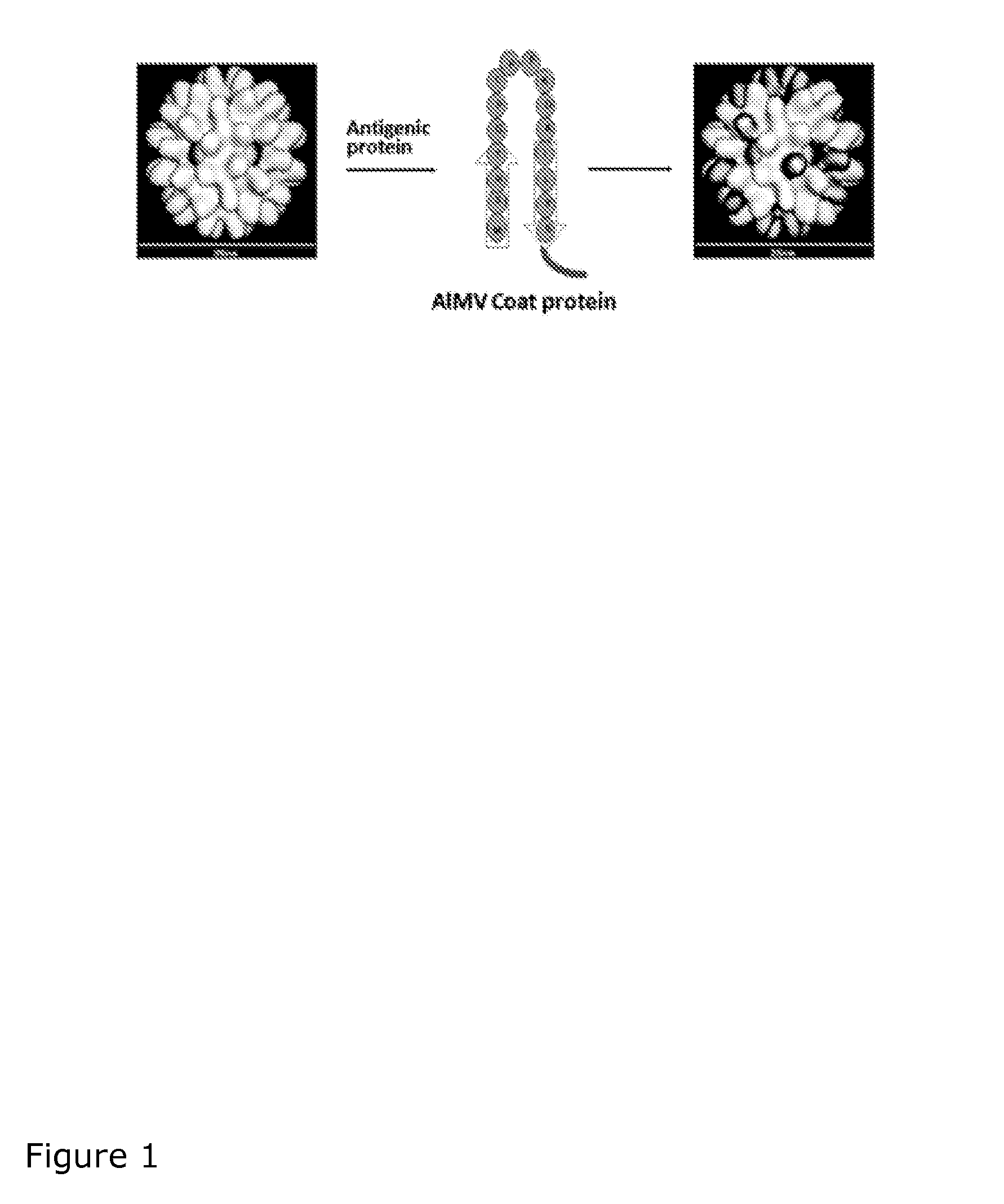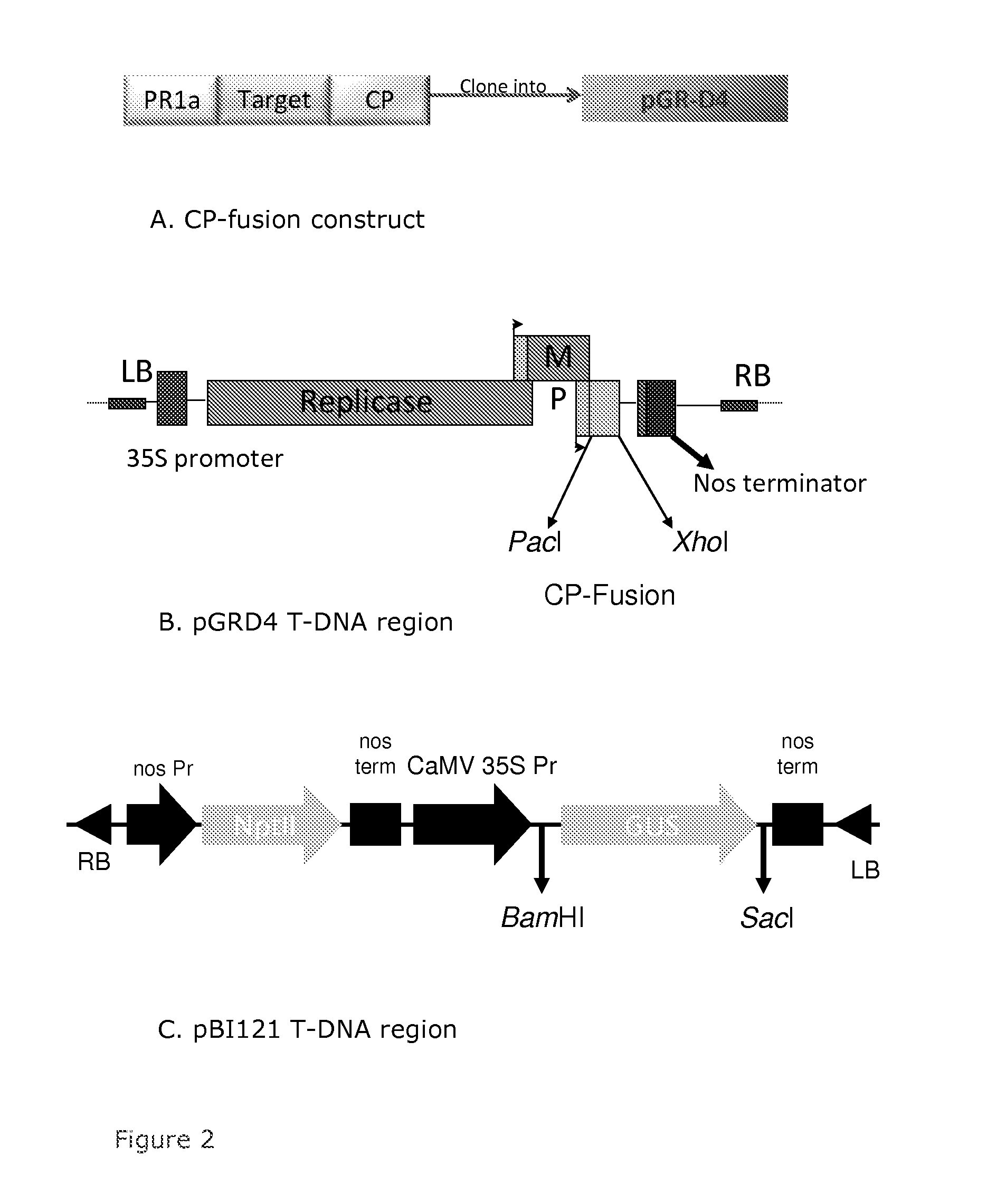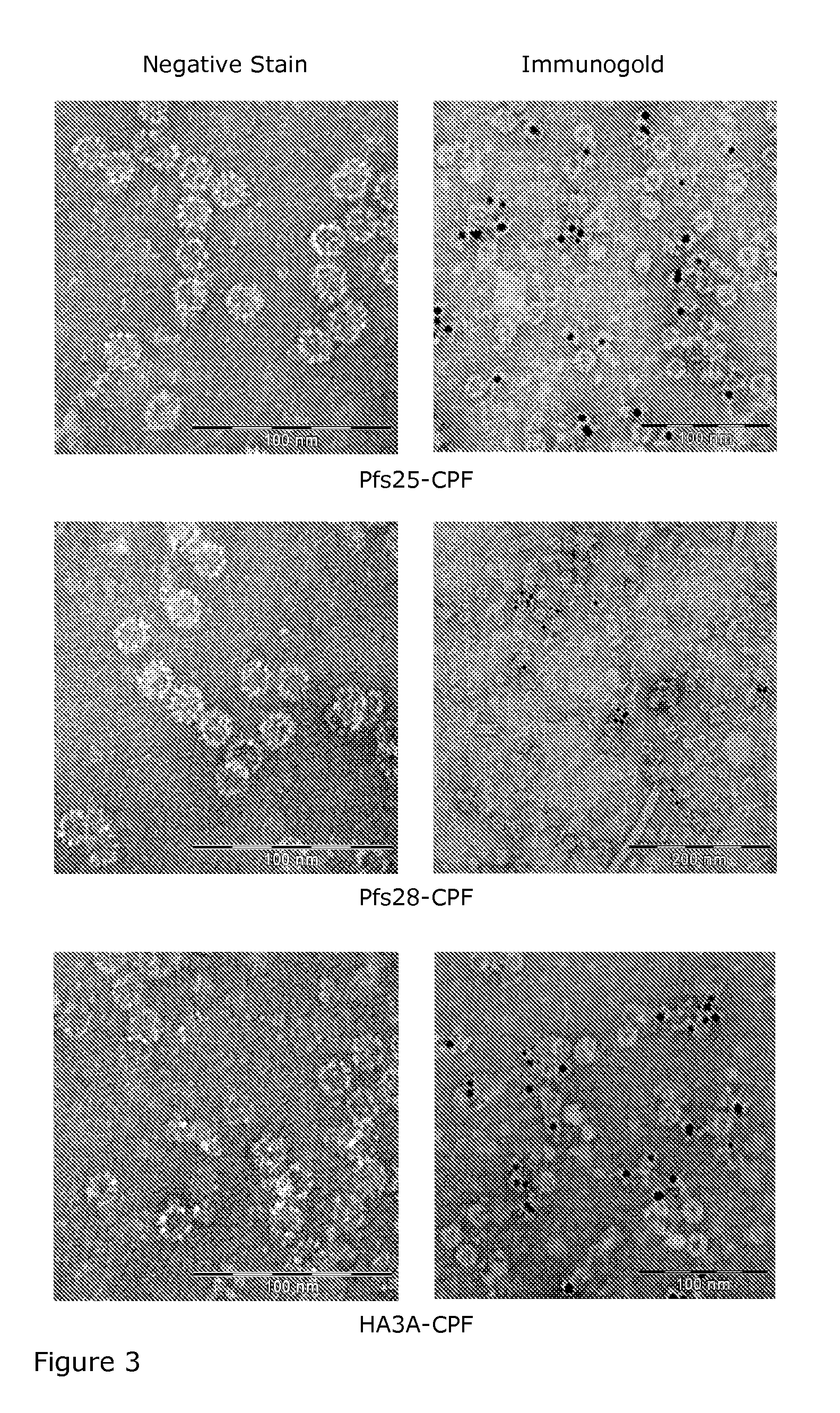Virus like particles comprising target proteins fused to plant viral coat proteins
a technology of target proteins and viruses, which is applied in the field of recombinant vaccines, can solve the problems of viruses being unable to assemble, undesirable antigenic epitopes or foreign polypeptides might not be properly presented,
- Summary
- Abstract
- Description
- Claims
- Application Information
AI Technical Summary
Benefits of technology
Problems solved by technology
Method used
Image
Examples
example 1
Construction of a Heterologous Vector for the Expression of AIMV-CP Fusion Proteins
[0052]Target genes included cell surface proteins specific to different sexual stages of the malaria parasite, P. falciparum, (Pfs25 (SEQ ID NO:4), Pfs28 (SEQ ID NO:5), and Pfs230 (SEQ ID NO: 49)), the globular domain of hemagglutinin (HA) from the Anhui strain of influenza virus (HA3A (SEQ ID NO:6)), the globular domain of HA from the California strains of influenza virus (HA3CO4 (SEQ ID NO:7) and HA3C06 (SEQ ID NO:8)), the globular domain of HA from the Indonesia strains of influenza virus (HA3I (SEQ ID NO:11)), full length HA from the Anhui strain (HAA or HAA1 (SEQ ID NO:9)), and full length HA from the Indonesia strain (HAI or HAI1 (SEQ ID NO:10)). Each target gene was cloned, using standard methods of molecular biology, as an N-terminal fusion to the AIMV coat protein (AIMV-CP, CP or CPF) or the optimized AIMV coat protein (CPO), which is encoded by a coding sequence optimized for expression in p...
example 2
Infiltration of Plants with Expression Vectors Bearing Fusion Constructs
[0054]The expression vectors produced in Example 1 were then introduced into Agrobacterium tumefaciens strain GV3101 and the resulting bacteria were grown overnight in minimal medium. The optical density of the cultures was determined and the protein expression strain was mixed with an Agrobacterium strain expressing the suppressor of silencing protein, p19, at a 4:1 ratio to a final O.D. of 0.5. The Agrobacterium solution was introduced by hand infiltration into the aerial parts of 6 week old, soil-grown, Nicotiana benthamiana plants as described previously (Green, et al., Biotechnol. J. 4: 1-8, 2009).
[0055]Plant tissue samples were taken from 3-7 days post-infiltration for determination of the levels of expression and solubility of the fusion protein. Samples were weighed and extracted in three volumes of extraction buffer (100 mM Na2HPO4, pH 7.1; 2.5 mM EDTA, pH 8.0) for total soluble protein, extraction buff...
example 3
Isolation and Purification of Virus Like Particles
[0056]On the day of maximum expression, leaves were harvested and homogenized in a blender in three volumes of phosphate-based extraction buffer with 0.5% Triton X-100. The homogenate was stirred for 30 minutes at 4° C., then centrifuged for 30 minutes at 5,000×g. The supernatant was filtered through miracloth and centrifuged at 15,000×g for 1 to 1.5 hours. The supernatant was precipitated with PEG and then again centrifuged for 30 min at 15,000×g. The pellet was resuspended in a phosphate based buffer and frozen at −20° C. After thawing, the suspension was centrifuged 30 minutes at 30,000×g. Aliquots of supernatant were analyzed by SDS-PAGE to estimate protein concentration. Supernatant was centrifuged for 2 h at 60,000×g in a Ti70 rotor. The pellet was resuspended in phosphate-based buffer. The resulting supernatant was analyzed by SDS-PAGE and Coomassie blue staining. Protein concentration was determined colorimetrically by compar...
PUM
| Property | Measurement | Unit |
|---|---|---|
| body weight | aaaaa | aaaaa |
| pH | aaaaa | aaaaa |
| cell surface polypeptide | aaaaa | aaaaa |
Abstract
Description
Claims
Application Information
 Login to View More
Login to View More - R&D
- Intellectual Property
- Life Sciences
- Materials
- Tech Scout
- Unparalleled Data Quality
- Higher Quality Content
- 60% Fewer Hallucinations
Browse by: Latest US Patents, China's latest patents, Technical Efficacy Thesaurus, Application Domain, Technology Topic, Popular Technical Reports.
© 2025 PatSnap. All rights reserved.Legal|Privacy policy|Modern Slavery Act Transparency Statement|Sitemap|About US| Contact US: help@patsnap.com



